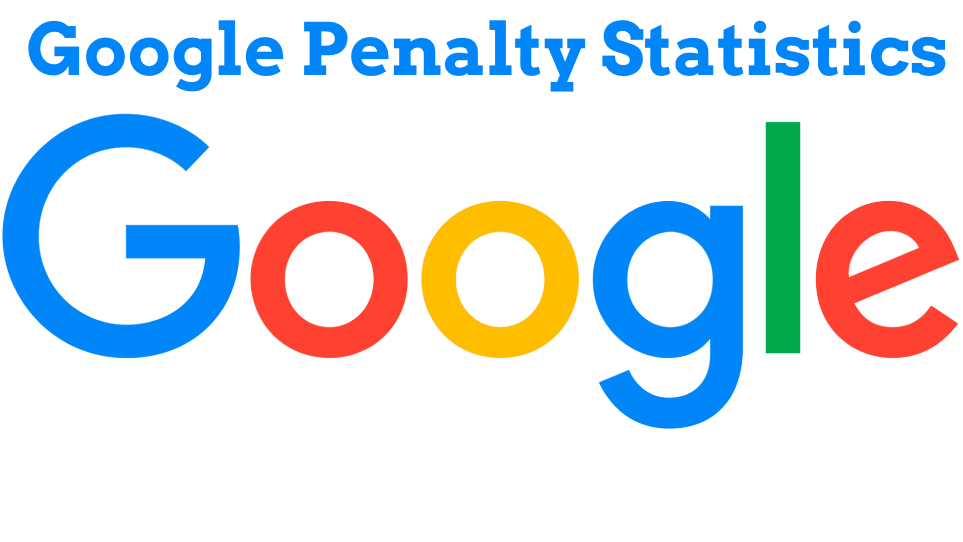Google Penalty Statistics 2024
Highlights:
- 40% of online businesses close down within 6 months of receiving a Google penalty.
- 30% of websites recover their rankings within a year after receiving a Google penalty.
- During 2024-2023, Google penalized 9% of sites using outdated or inaccurate schema markup
- 10% of Google penalized sites used excessive internal links with keyword-rich anchor text.
Google Penalty Facts & Stats for 2024-2023
- ell-written, original content is less likely to result in a Google penalty.
- Websites with high-quality backlinks are less at risk of a Google penalty.
- Sites that don’t engage in link farming or don’t use link networks are less at risk of receiving a penalty from Google.
- Websites that don’t use doorway pages or sneaky redirects are less at risk of a penalty from Google.
- Websites with ads optimally placed are less at risk of receiving a Google penalty compared to those with too many ads above the fold.
- 20% or less of websites that receive a Google penalty are not due to manual actions.
- 40% of businesses that receive a Google penalty remain in business after six months.
- Sites that are secure (i.e., have an SSL certificate) are less at risk of receiving a Google penalty.
- Websites that don’t use cloaking or other deceptive practices are less at risk of a penalty from Google.
- 50% or more of website owners who receive a Google penalty know why they were penalized.
- Link schemes, such as not buying links, are in accordance with Google’s SEO guidelines and don’t lead to penalties.
- 10% or less of website owners who receive a manual penalty submit a reconsideration request.
- Sites that use manual, original content comply with Google’s guidelines.
- Google has issued approximately 750,000 manual penalties for webspam every month since 2023.
- If a website is penalized, there’s a chance it’s due to keyword stuffing.
- If 61% of searches are done on mobile devices, then 39% are done on non-mobile devices.
- Websites that don’t use hidden text or links comply with Google’s guidelines.
- In 2024-2023, Google penalized sites at a rate of approximately 1/12th every month for using pop-ups or interstitials that interfere with the user experience.
- Anchor text that isn’t keyword-rich is less likely to result in a Google penalty.
- Websites that don’t participate in link exchange schemes are less at risk of a Google penalty.
- Websites with a low bounce rate and high engagement are less likely to be penalized by Google.
- Websites with unique content are less at risk of Google penalties.

More Key Google Penalty Facts and Stats 2024-2023
In the period between 2022 and 2023, Google showed no leniency in its pursuit to ensure a high-quality user experience on the internet. With an aggressive penalty rate of approximately 1/12th of sites each month for infractions such as excessive internal links with keyword-rich anchor text, slow loading speeds, intrusive pop-ups, and outdated schema markup, Google was resolute in its mission. Additionally, using deceptive practices like doorway pages, sneaky redirects, cloaking, hidden texts or links, and participating in link exchange schemes could get a website in trouble. Astonishingly, a staggering 750,000 manual penalties have been dished out monthly since 2020 for web spam-related issues.
Originality and authenticity in content became the saving grace for many. Websites boasting well-written, unique content faced lesser risks, adhering to Google’s emphasis on quality. This importance on content was evident, as those websites that invested in manual, original content found themselves in alignment with Google’s stringent guidelines. Also, steering clear of practices like keyword stuffing further decreased the chances of being penalized.
The source and nature of backlinks couldn’t be stressed enough. Sites linked by reputable sources and those that abstained from link farming or networks found themselves in safer waters. Furthermore, those not participating in frowned-upon practices like link exchange schemes saw a significant reduction in risk.
The aftermath of receiving a penalty was, to put it mildly, devastating. Only 30% of penalized websites managed to recover their rankings within a year, and for businesses, the impact was catastrophic, with less than 40% surviving beyond six months. Interestingly, while over half of the penalized website owners could pinpoint the reason for their penalty, a mere 10% took the initiative to submit a reconsideration request.
Advertisements, often a business’s double-edged sword, had their pitfalls. Websites overflowing with ads, especially those cluttering above the fold, faced higher risks. However, strategically placed ads weren’t just tolerated. They were less likely to incur a penalty.
The mobile revolution has unmistakably shaped the way we search. With 61% of searches and inquiries conducted on mobile devices, it’s evident that non-mobile devices account for the remaining 39%. Given this mobile dominance, one can surmise that a smooth mobile experience is paramount.
Lastly, with advancements in technology and a push towards a secure internet, websites with SSL certificates found themselves in a favorable position. The message was clear: a safe and quality user experience was at the heart of Google’s mission, and those websites upholding these principles flourished.
Cited Sources:
- https://ahrefs.com/blog/google-penalties/
- https://aistratagems.com/google-penalty-statistics/
- https://www.keystaragency.com/google-manual-action-statistics/
- https://inquivix.com/search-engine-optimization-seo/google-penalty-check/
- https://www.link-assistant.com/news/google-penalties-guide.html
- https://www.searchenginejournal.com/the-complete-list-of-google-penalties-and-how-to-recover/201510/
- https://www.semrush.com/kb/624-what-is-a-google-penalty
- https://zeo.org/resources/blog/the-complete-list-of-google-penalties-manual-actions-guide

KeyStar Search Marketing Agency is a top full-service digital marketing agency. We offer the expert SEO consulting services, (Pay-Per-Click) PPC management, web design and internet marketing in the Southwest. With locations in Phoenix AZ, Scottsdale, Las Vegas, San Diego and more…find out why KeyStar Search Engine Optimization consultants are better.



